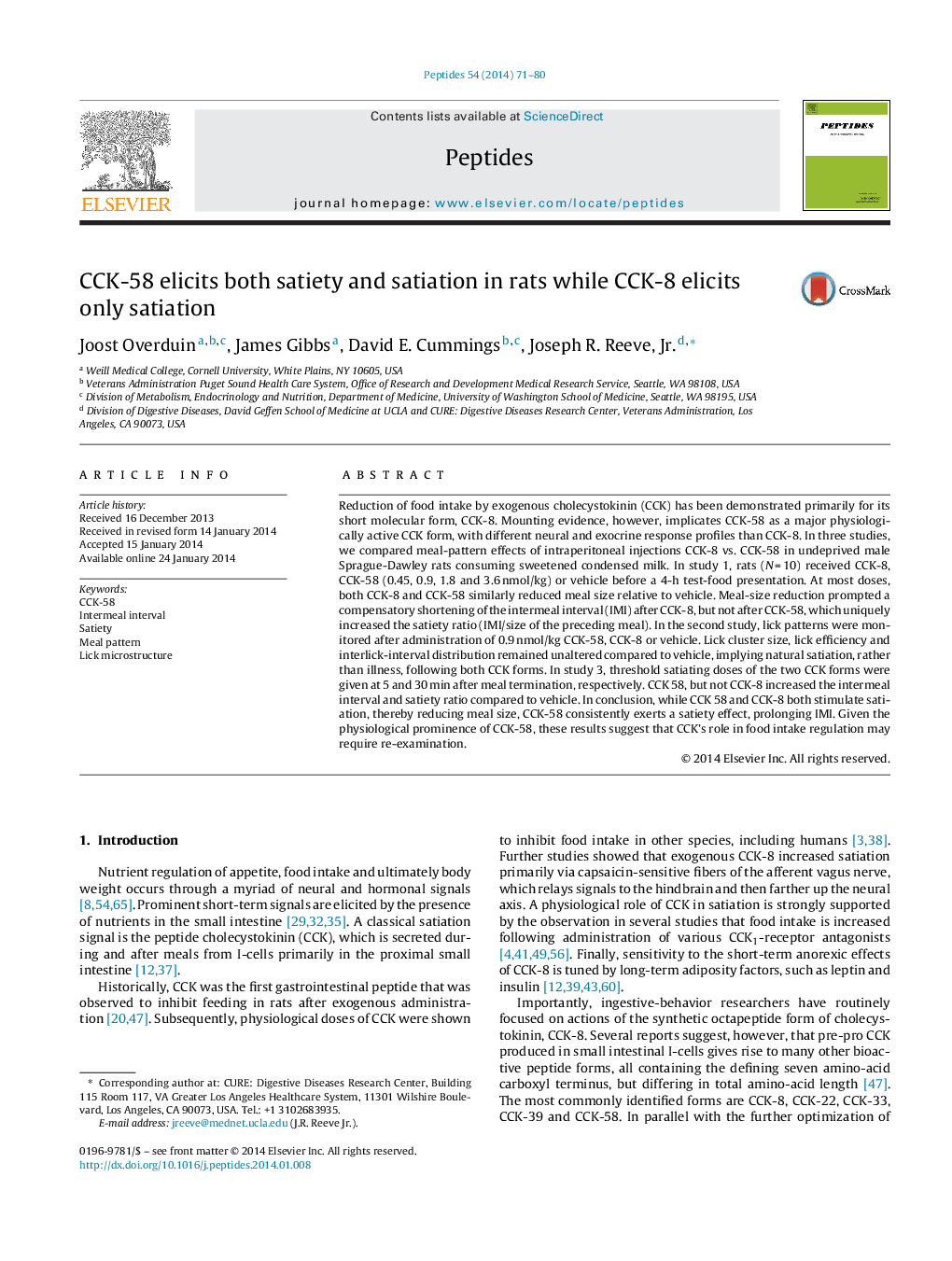| Article ID | Journal | Published Year | Pages | File Type |
|---|---|---|---|---|
| 2006120 | Peptides | 2014 | 10 Pages |
Abstract
Reduction of food intake by exogenous cholecystokinin (CCK) has been demonstrated primarily for its short molecular form, CCK-8. Mounting evidence, however, implicates CCK-58 as a major physiologically active CCK form, with different neural and exocrine response profiles than CCK-8. In three studies, we compared meal-pattern effects of intraperitoneal injections CCK-8 vs. CCK-58 in undeprived male Sprague-Dawley rats consuming sweetened condensed milk. In study 1, rats (NÂ =Â 10) received CCK-8, CCK-58 (0.45, 0.9, 1.8 and 3.6Â nmol/kg) or vehicle before a 4-h test-food presentation. At most doses, both CCK-8 and CCK-58 similarly reduced meal size relative to vehicle. Meal-size reduction prompted a compensatory shortening of the intermeal interval (IMI) after CCK-8, but not after CCK-58, which uniquely increased the satiety ratio (IMI/size of the preceding meal). In the second study, lick patterns were monitored after administration of 0.9Â nmol/kg CCK-58, CCK-8 or vehicle. Lick cluster size, lick efficiency and interlick-interval distribution remained unaltered compared to vehicle, implying natural satiation, rather than illness, following both CCK forms. In study 3, threshold satiating doses of the two CCK forms were given at 5 and 30Â min after meal termination, respectively. CCK 58, but not CCK-8 increased the intermeal interval and satiety ratio compared to vehicle. In conclusion, while CCK 58 and CCK-8 both stimulate satiation, thereby reducing meal size, CCK-58 consistently exerts a satiety effect, prolonging IMI. Given the physiological prominence of CCK-58, these results suggest that CCK's role in food intake regulation may require re-examination.
Related Topics
Life Sciences
Biochemistry, Genetics and Molecular Biology
Biochemistry
Authors
Joost Overduin, James Gibbs, David E. Cummings, Joseph R. Jr.,
